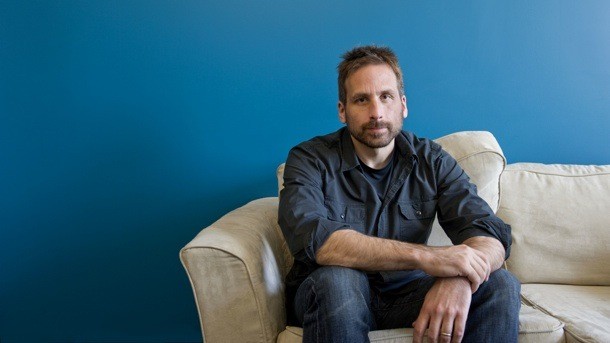Quantum Mechanics And The Joy Of Ambiguity: A Conversation With Ken Levine

Note: There are heavy spoilers for BioShock Infinite's core game contained in this interview.
"Once you start getting into quantum mechanics, the notion of the individual becomes very complicated," Irrational Games' Ken Levine tells me at the outset of our conversation. While BioShock Infinite's Burial at Sea Episode 1 DLC was the topic, our discussion (much like Bioshock Infinite's plot) moved in very interesting directions.
Burial At Sea's Elizabeth isn't one of the many. She is the one we know. Our companion through one of this year's most important titles rejoins the adventure, though in a markedly different role. And if you've played through BioShock Infinite, you know just how powerful and dangerous she can be.
I ask Levine if Elizabeth's older appearance gives us an understanding of when Burial at Sea takes place relative to the main experience. "Yes and no, because time… I don't want to get too 'quantum nerdy' here," he chuckles.
It's from here that we branch off from Burial at Sea and start discussing more about his approach to crafting the story of BioShock Infinite. As we weave in out of the complexities of quantum mechanics, Levine asks me if I've read Alan Moore's Watchmen.
He points out an iconic scene in which the atemporal Dr. Manhattan tries to explain his perception of the universe. "There is no future," he says. "There is no past. Do you see? Time is simultaneous, an intricately structured jewel that humans insist on viewing one edge at a time, when the whole design is visible in every facet."
"Einstein said that 'the only reason for time is so that everything doesn't happen at once," Levine tells me. "Our brains think about time chronologically, but Elizabeth at the end of BioShock Infinite tries to present to Booker her vision of the universe with the lighthouses. That's just how she's trying to present it to him. She has the ability to see all the doors and what's behind the doors. That's a cosmically awesome ability."
Levine has embraced the infinite possibilities of his story. He tells me that he won't share his interpretation, because he doesn't want to take that from fans. "All these things people are debating about, I'm actually trying not to draw a line in the sand," he says. "In a game called BioShock Infinite, there are a lot of interpretations, and they can all be correct."
To further tug at the quantum mechanics thread, Levine mentions one of my favorite thought experiments, Schrödinger's Cat, as we discussed the end of the main game. Is Anna in the crib or isn't she? Does that scene take place after the main game, or before DeWitt sold her?
"I have my own idea," Levine says. "But I'm not going to share that." If we are to look at games as an art form, it's critical that we have examples of work open to interpretation. Just like viewing an abstract painting or listening to a piece of music, BioShock Infinite's story carries with it a piece of the player.
"I have my thread in my head, and people on the team may have their thread," he says. "I know for me, but it doesn't matter. A fan once said, 'if I find out that this means that, I'm going to be so mad.'"
"You're never going to find out. I'm not going to tell you, because it's art in the sense that it means what it means to you. It's not like it starts your car in the morning or turns the light on. It doesn't do anything practical. It makes you think and makes you react. That's what I want. That's my favorite part."
We won't be hearing from Levine any time soon about his interpretation of his own story, but he hasn't written off the idea completely. "Maybe in an interview years from now I'll want to talk about it."
You can read more about BioShock Infinite's Burial at Sea Episode 1 DLC in our latest new preview.

Get the Game Informer Print Edition!
Explore your favorite games in premium print format, delivered to your door.
- 10 issues per year
- Only $4.80 per issue
- Full digital magazine archive access
- Since 1991









